Related Research Articles
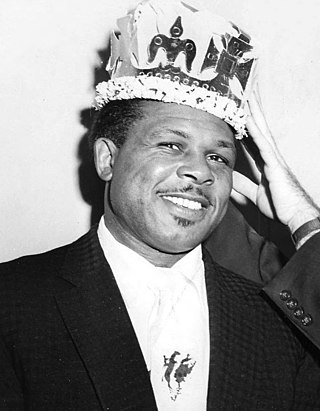
Archie Moore was an American professional boxer and the longest reigning World Light Heavyweight Champion of all time. He had one of the longest professional careers in the history of the sport, competing from 1935 to 1963. Nicknamed "The Mongoose", and then "The Old Mongoose" in the latter half of his career, Moore was a highly strategic and defensive boxer. As of December 2020, BoxRec ranks Moore as the third greatest pound-for-pound boxer of all time. He also ranks fourth on The Ring's list of "100 greatest punchers of all time". Moore was also a trainer for a short time after retirement, training Muhammad Ali, George Foreman, Bob Foster, Eddie Mustafa Muhammad, Earnie Shavers and James Tillis.

Stanisław Kiecal, better known in the boxing world as Stanley Ketchel, was an American professional boxer who became one of the greatest World Middleweight Champions in history. He was nicknamed "The Michigan Assassin." He was murdered at a ranch in Conway, Missouri, at the age of 24.

Edward Henry Greb was an American professional boxer. Nicknamed "The Pittsburgh Windmill", "The Smoke City Wildcat" and "The Pittsburgh Bearcat," he is widely regarded by many boxing historians as one of the best pound for pound boxers of all time.

Edward Patrick "Mickey" Walker was an American professional boxer who held both the world welterweight and world middleweight championships at different points in his career. Born in Elizabeth, New Jersey, he was also an avid golfer and would later be recognized as a renowned artist. Walker is widely considered one of the greatest fighters ever, with ESPN ranking him 17th on their list of the 50 Greatest Boxers of All-Time and boxing historian Bert Sugar placing him 11th in his Top 100 Fighters catalogue. Statistical website BoxRec rates Walker as the 6th best middleweight ever, while The Ring Magazine founder Nat Fleischer placed him at No. 4. The International Boxing Research Organization ranked Walker as the No. 4 middleweight and the No. 16 pound-for-pound fighter of all-time. Walker was inducted into the Ring magazine Hall of Fame in 1957 and the International Boxing Hall of Fame as a first-class member in 1990.
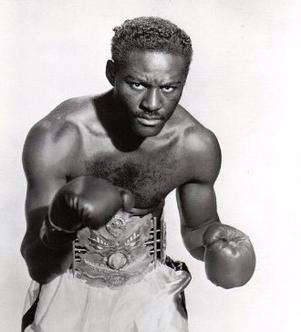
Ezzard Mack Charles, known as the Cincinnati Cobra, was an American professional boxer and World Heavyweight Champion, known for his slick defense and precision. Often regarded as the greatest light heavyweight of all time, Charles defeated numerous Hall of Fame fighters in three different weight classes. Charles retired with a record of 95-25-1. He was posthumously inducted into the International Boxing Hall of Fame in the inaugural class of 1990.
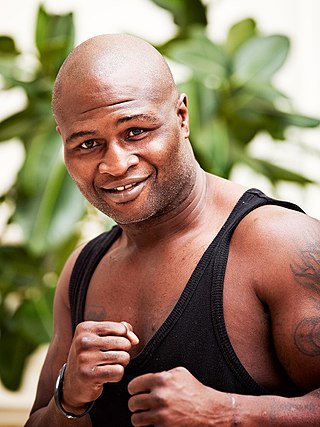
James Nathaniel Toney is an American former professional boxer who competed from 1988 to 2017. He held multiple world championships in three weight classes, including the IBF and lineal middleweight titles from 1991 to 1993, the IBF super middleweight title from 1993 to 1994, and the IBF cruiserweight title in 2003. Toney also challenged twice for a world heavyweight title in 2005 and 2006, and was victorious the first time but was later stripped due to a failed drug test. Overall, he competed in fifteen world title fights across four weight classes.
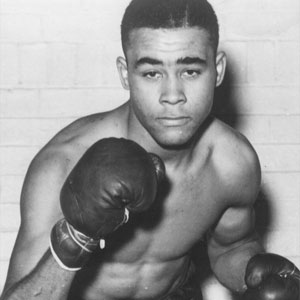
Charley Burley was an American boxer who fought as a welterweight and middleweight from 1936 to 1950. Archie Moore, the light-heavyweight champion who was defeated by Burley in a 1944 middleweight bout, was one of several fighters who called Burley the greatest fighter ever. Burley was the penultimate holder of both the World Colored Welterweight Championship and the World Colored Middleweight Championship.
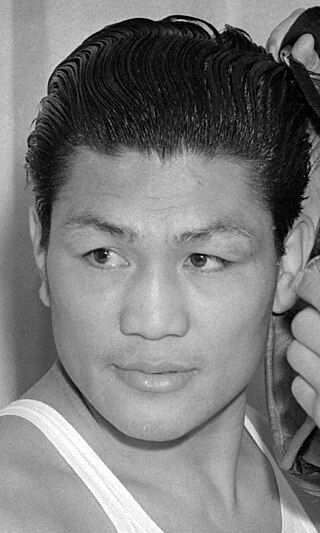
Ceferino Montano Garcia was a champion boxer born in Naval, Biliran, Philippines. He holds the most victories ever achieved by a Filipino boxer and is also the only boxer from the Philippines to become world champion in the middleweight division. Garcia is commonly credited to as the first well known user of the bolo punch, which was later popularized by Cuban fighter Kid Gavilán. He was inducted into the Ring Magazine Hall of Fame in 1977 and the World Boxing Hall of Fame in 1989.
Willis 'Shorty' Hogue was an American boxer in California during the 1940s, along with Lloyd Marshall, Charley Burley, Jack Chase, Archie Moore and Eddie Booker. He had a twin brother, Willard, known as "Big Boy" Hogue, who also boxed in this era. No complete record exists for either brother, but Shorty Hogue was once ranked #3 at middleweight by Ring magazine. He scored three wins over Archie Moore and beat Jack Chase, Johnny "Bandit" Romero and Eddie Booker. His win over Booker earned him the California Middleweight Championship. Around this time, the World Championships were frozen by World War II, and most of the best middleweights of the era fought over the California title. Charley Burley stopped Hogue in 1942, and after that, Hogue's career hit the doldrums. Most of Hogue's bouts after this were knockout losses, including one to Eddie Booker, in which he lost the California Middleweight Championship.
Aaron "Little Tiger" Wade was an American Middleweight boxer who fought from 1935 to 1950. Wade was a member of the famed Black Murderers' Row.

Chad Dawson is an American former professional boxer who competed from 2001 to 2019. He held multiple world championships in the light heavyweight division, and was one of that division's most highly regarded boxers between 2006 and 2013.

Holman Williams was a world welterweight and middleweight boxing contender. Williams is a member of the infamous Murderers' Row, a group of black fighters who were never able to get a world title shot.
Hilton Edward Booker was an American boxer who was active during the 1930s and 1940s.
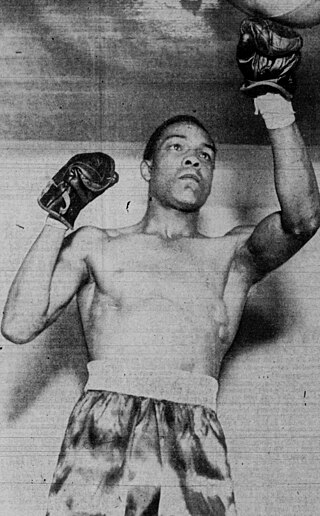
Jack Chase (1914-1972) was an African-American middleweight, who boxed in the 1930s and 1940s. He was born in Texas and fought mainly on the west coast of the United States. He boxed under the name ‘Young Joe Lewis’ for the first part of his career, before changing to Jack Chase in 1942. His official fight count stands at 122, but it is believed he competed in an additional 40 plus fights prior to 1936, during which time his full record is unknown.
Herbert Lewis Hardwick Arroyo, also known as "Cocoa Kid", was a Puerto Rican boxer of African descent who fought primarily as a welterweight but also in the middleweight division. Hardwick won the World Colored Championships in both divisions. He was a member of boxing's "Black Murderers' Row" and fought the best boxers of his time. He was inducted into the International Boxing Hall of Fame in 2012.
The World Colored Middleweight Championship was a title awarded to black boxers in the late nineteenth and early twentieth centuries. This was the only recognized middleweight championship available to blacks prior to Tiger Flowers winning the world middleweight boxing championship by defeating Harry Greb on 26 November 1926.
The World Colored Welterweight Championship was a title that existed during the time of the color bar in professional boxing.
Calvin Coolidge Lytle, better known by his professional names Bert Lytell and Chocolate Kid, was an American boxer and middleweight contender in the 1940s and early 1950s. Recognized as a member of the famous Murderers' Row, the 5'8" Lytell fought against other top black middleweights of his time, including Charley Burley, Herbert "Cocoa Kid" Lewis Hardwick, Holman Williams, and Charley Doc Williams, as well as other notable fighters including Archie Moore and Sam Baroudi.

Charles Edward "Doc" Williams was an American professional boxer who was active during the 1940s and 1950s.
Leonard Morrow was an American professional boxer in the light heavyweight and heavyweight divisions, who was active from 1946 to 1954. He was ranked as a top contender in the light heavyweight division from 1948 to 1950. In 1948, he was the number two rated contender by the The Ring (magazine) for Freddie Mills' light heavyweight world title. During his career, he defeated hall of fame fighters, champions, and top contenders such as Archie Moore, Jimmy Bivins, Bert Lytell, and Arturo Godoy. In 1989, Archie went on record saying that Morrow was one of only three men that ever really hit him alongside Rocky Marciano and Yvon Durelle.
References
- 1 2 3 Murderers' Row by Springs Toledo, http://www.SpringsToledo.com
- 1 2 Charley Burley and the Black Murderers Row, Harry Otty
- ↑ The Big Apple: Murderers' Row. Barry Popik. Accessed October 29, 2007.
- ↑ "The Murderers' Row | Charley Burley".
- ↑ Middle Town Journal, http://www.middletownjournal.com
- ↑ International Boxing Hall of Fame http://www.ibhof.com
- ↑ Boxrec, http://www.boxrec.com
- ↑ "Charley Burley or Holman Williams?".
- ↑ "The Fifty Greatest Middleweights of All Time Part Five: 10-1". 6 November 2015.